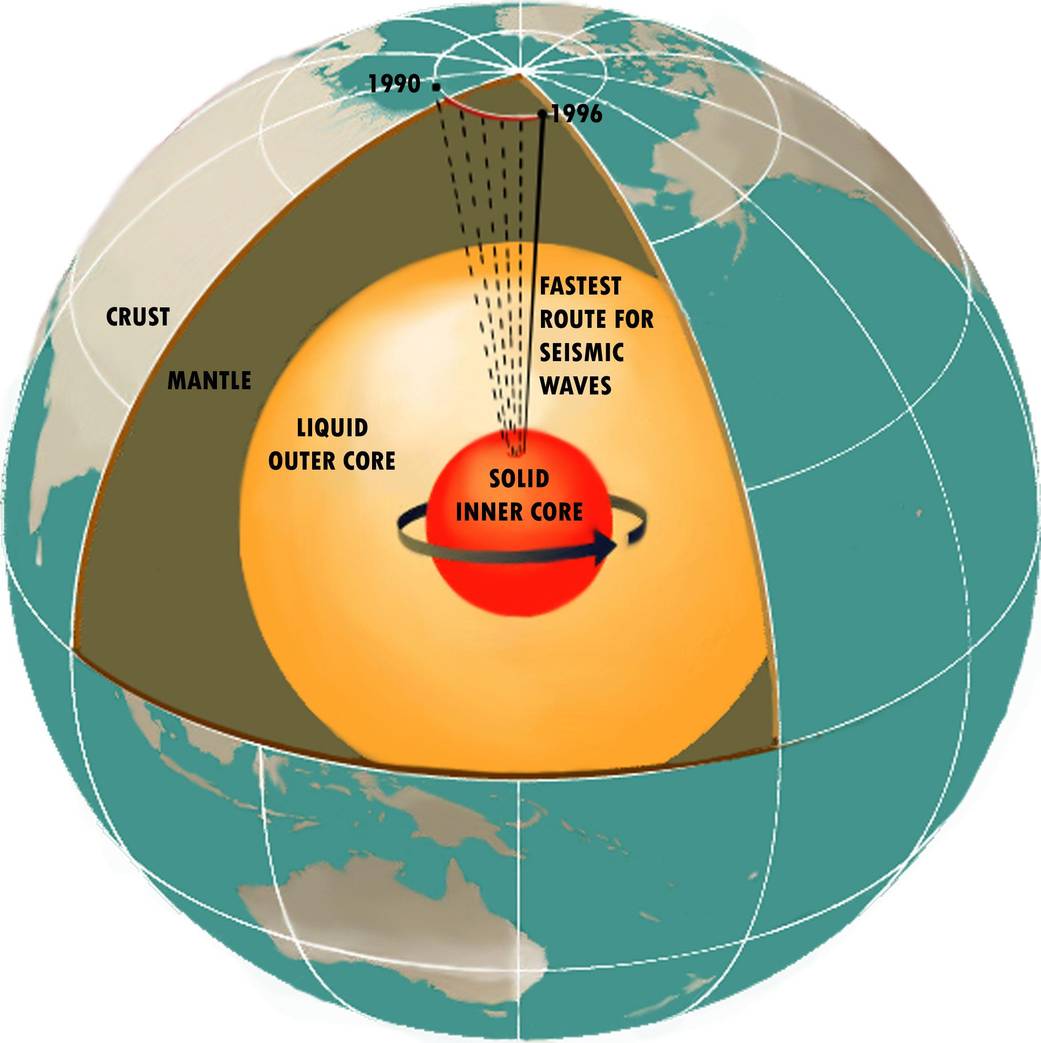A cut-away illustration of Earth’s interior. At the heart of our planet lies a solid iron ball, about as hot as the surface of the sun. Researchers call it “the inner core”, which is 70% as wide as the moon. It spins at its own rate, as much as 0.2o of longitude per year faster than the Earth layers above it. Surrounding the iron ball is an ocean of liquid iron known as “the outer core.” This inner and outer core duo is referred to as Earth’s geodynamo. Surrounding the core is “the mantle” and Earth’s “crust” forms the top layer.
Earth’s magnetic field comes from the outer core’s ocean of iron, which is an electrically conducting fluid in constant motion. The magnetic field waxes and wanes, the poles drift and, occasionally, flip. Included in the diagram is the movement of magnetic north from 1900 to 1996. Graphic Credit: Dixon RohrLink to associated news itemUnlabeled version
1 min read



























